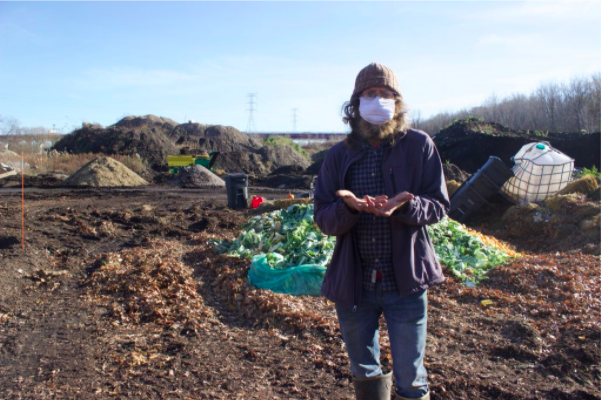Waste Less, Feed More
By Erin Bernhard, Ohio Ocean Foundation Intern
NRDC.org
Did you know that approximately 30-40 percent of the food supply at the retail and consumer levels is wasted in the United States? (Buzby et al. 2014). If we were able to even reduce this waste by one quarter, that would be enough to feed 870 million people, which is 12% of the world’s current population. In reality, we already grow enough food to provide for all of the earth’s population, but our large percentage of food waste contributes to food insecurity and hunger all across the globe (Teerlink 2019). This waste is due to a magnitude of reasons that occur at every stage of food production and supply. At the retail level, blemished produce is not as “desirable”, so many sellers will not accept it.
At the consumer level, we contribute to food loss when we buy or cook more than we need. While we [as consumers] do not have as much control over the food waste that occurs during production or transportation, we can do our part by being mindful of the amount of food we need to purchase, and where we are purchasing our food. In most grocery stores, produce is pre-packaged, which leaves the consumer with little choice in how much produce they are purchasing. Pre-packing produce does not only force some consumers to buy more than they need (potentially contributing to food waste), but it also creates more waste from the plastic packaging that will likely end up in a landfill.
So, what steps can you take to reduce your food waste?
Change.org
Based in Willoughby Hills, Perfectly Imperfect Produce rescues produce from local farms and wholesalers. This produce is perfectly good to eat, but rejected by many grocery stores due to its unique size, shape, or color. As a consumer, you can purchase a subscription for whatever amount of produce you need as well as the frequency in which you would like to receive the delivery. Essentially, this service rescues food that would otherwise be wasted, and redirects it right to your doorstep!
Based in Cleveland, Rust Belt Riders provides composting services for much of Northeast Ohio. They offer curbside pick-up, neighborhood drop-off, and commercial collection. Through this, they are diverting food waste that would otherwise end up in a landfill, and creating healthy, and usable soil.
Located in Kent, the Haymakers Farmers Market is open year-round on every Saturday morning. Through the summer months, they reside on Franklin Ave. between Main St. and Summit St. under the Haymaker overpass. In the winter season, the market is at the United Methodist Church of Kent (1435 E Main St). Shopping at farmers markets is a great way to support local and buy exactly what you need, while reducing food waste and food packaging waste.
Hunger Network, Food Rescue App
If you are interested in helping on a larger scale within your community, you can volunteer through the Food Rescue app. The app will tell you where to pick up food (that would otherwise be wasted) and you then deliver food to a local hunger shelter.
Farmanddairy.com
Be mindful of your food waste and the resources that are available to you! Not only will this help your community, but it will also help you save money and live more sustainably. You can be a part of the change even by making one small adjustment. Try a new local grocery store/market, look into local services, reflect on what makes sense for your lifestyle, and go from there! Happy eating!
Haymakermarket.com
1Buzby, Jean C, et al. “The Estimated Amount, Value, and Calories of Postharvest Food Losses at the Retail and Consumer Levels in the United States.” United States Department of Agriculture, Feb. 2014. https://www.ers.usda.gov/webdocs/publications/43833/43680_eib121.pdf?v=0
2 Teerlink, Marc. “By Ending Food Waste, We Could Feed 10 Billion People.” Forbes, Forbes Magazine, 25 Nov. 2019, www.forbes.com/sites/sap/2019/11/25/ending-food-waste-could-feed -10-billion-people/?sh=208333a6159a.




